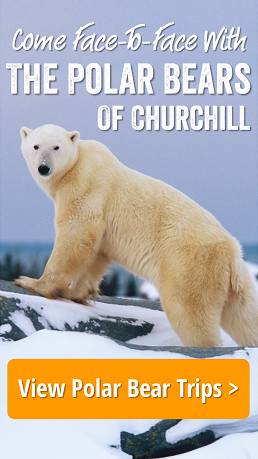by Steve Selden | Aug 30, 2015 | Churchill Photography
Natural Habitat Adventures guide Melissa Scott took this photo of two polar bears in Churchill’s Wildlife Management Area. In the heart of the season in November. Enjoy!
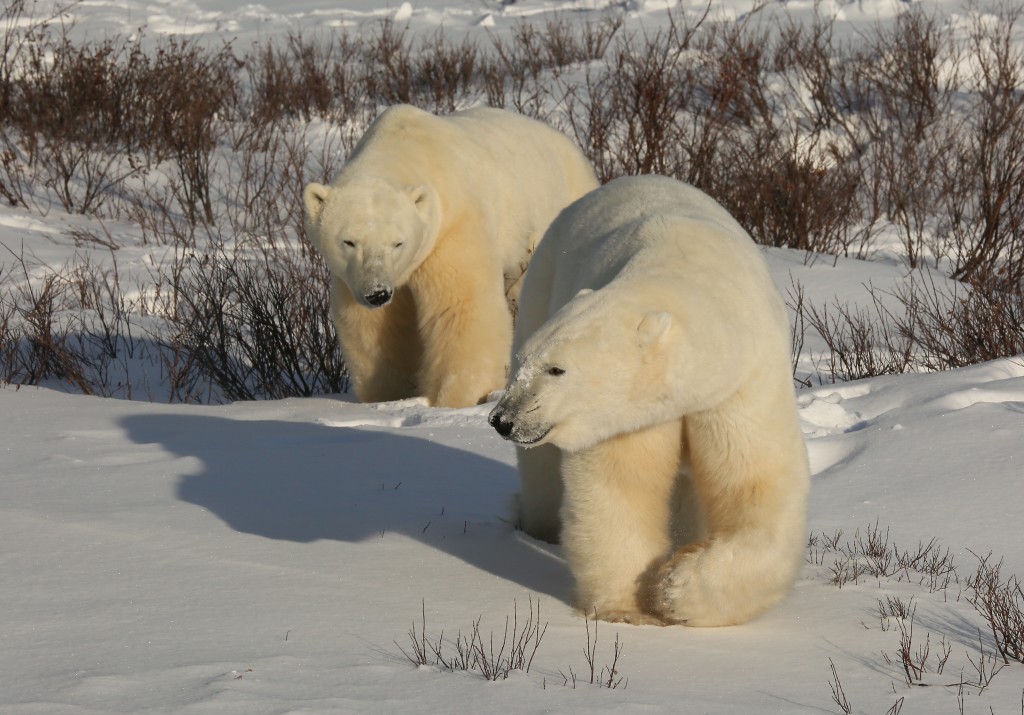
Polar bears in Churchill. Melissa Scott Photo.
by Steve Selden | Aug 16, 2015 | Tour News
Natural Habitat Adventures guide Moira LePatourel and her last group of travelers in
Churchill’s Arctic summer had a full compliment northern phenomenon. “We had the full sub-arctic experience on our final trip” Le Patourel stated. Two nights of aurora viewing and the first
arctic fox sighting of the season gave this trip a unique personality shared by a very excited group of travelers.
Northern lights become prevalent late at night in August and it’s always a thrill when groups see them in summer. Memories that will burn forever!
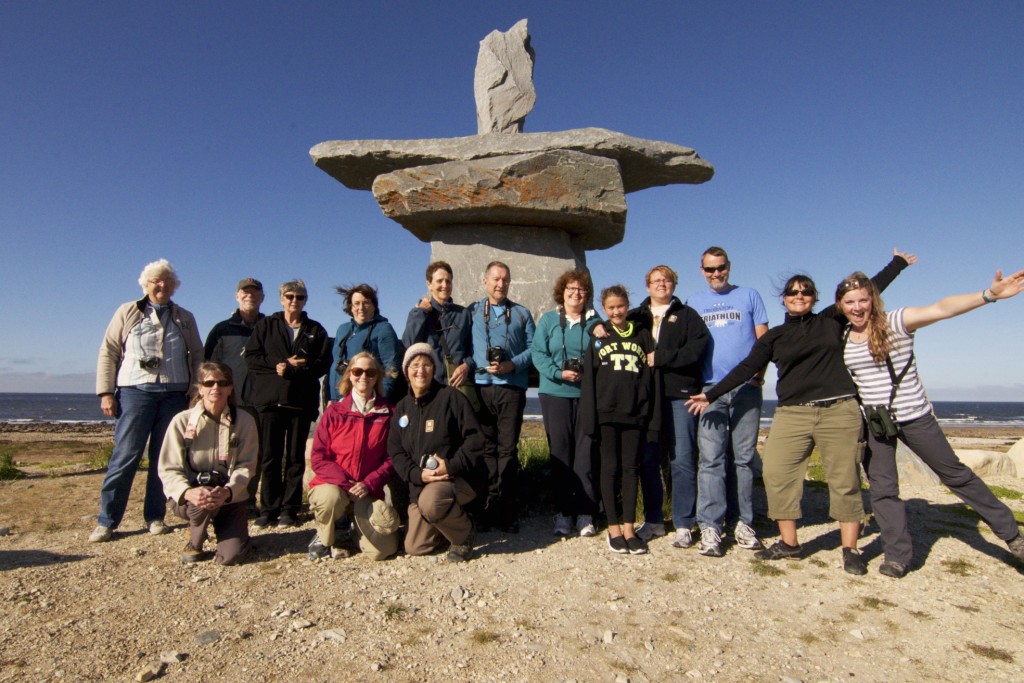
Natural Habitat Group in Churchill. Moira LePatourel photo.
The group also had the fortune to spot and observe four polar bears over the week. One
polar bear was swimming in the Hudson Bay and another resting peacefully on the smooth, rocky Precambrian shield. Another mom and her cub were seen over in Button Bay lounging on the beach getting suntans.
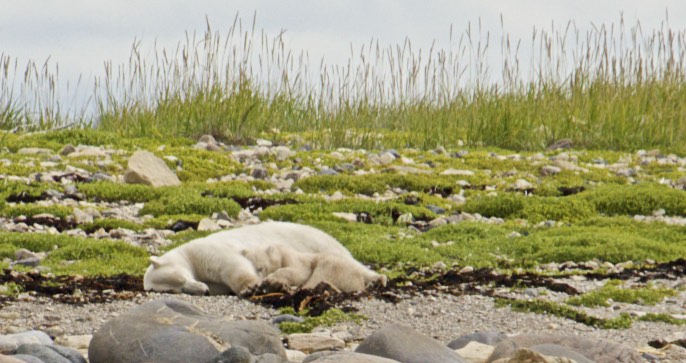
Polar bear mom and cub on the beach at Button Bay. Moira LePatourel photo.

Polar bears resting on the beach. Moira LePatourel photo.
An
incredible bounty of belugas crowded the Hudson Bay and Churchill River all week as the last stage of summer plays itself out. “We also got to hear the cello being played on the explore.org research boat and saw the whales come swimming over in response to musician Rob’s music. All that and the sun shining for most of our trip too! Couldn’t have asked for a better finale.” expressed LePatourel.
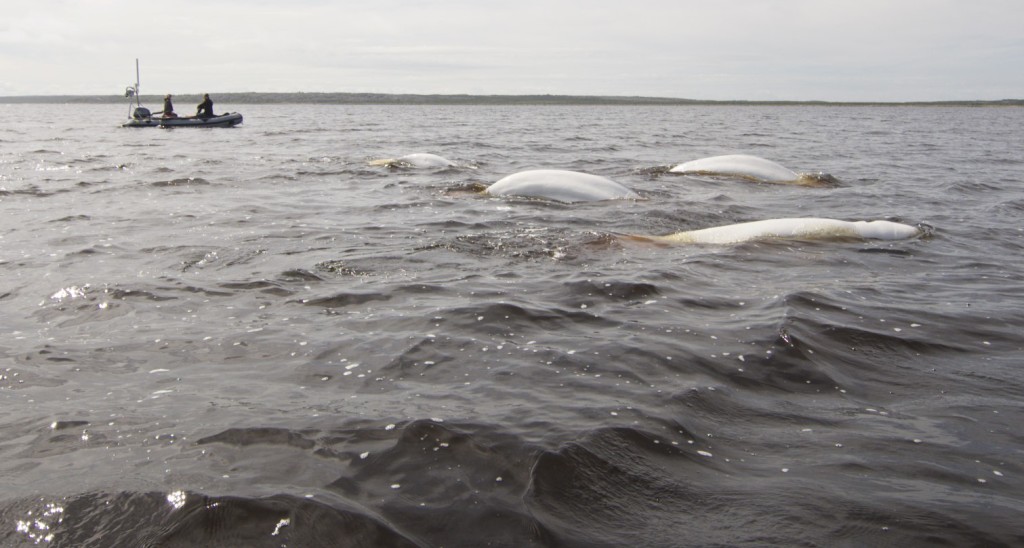
Belugas in the Churchill River. Moira LePatourel photo.
by Steve Selden | Aug 10, 2015 | Churchill Photography
Some fresh summer shots from Churchill local photographer and Parc’s Canada ranger Rhonda Reid. Churchill is full of many surprises as summer starts to blend into fall during August. A Natural Habitat Adventures group was incredibly fortunate to see polar bears, beluga whales and northern lights last week which is always an incredible feat!

Northern grass of parnassus with pollinating insects in petals. Rhonda Reid photo.

Precambrian shield sloping down towards the Hudson Bay. Rhonda Reid photo.

Polar bear mom and cub nearing the dock at Cape Merry. Rhonda Reid photo.

Manitoba Conservation officer monitoring bears emerging from water. Rhonda Reid photo.

Polar bear sow and cub on the far point rocks near Cape Merry. Rhonda Reid photo.
by Steve Selden | Jul 24, 2015 | Tour News
Churchill’s Arctic summer season for Natural Habitat Adventures groups has been incredibly exciting so far. Aside from the bountiful array of beluga whales in the Churchill River and Hudson Bay, there’s been some polar bear action out on Eskimo point just north of Fort Prince of Wales. This peninsula of land juts into the bay and the isostatic rebound over the years has caused the land to emerge from the water and grow in size.

Male polar bear holding his position on Eskimo Point. Moira Le Patourel photo.
The “point” has also become traditional resting spot for
polar bears in the summer months and quite often mother’s and cubs are found there. Because it is somewhat isolated from the town, it may attract bears hoping to nab a seal or beluga whale venturing too close to shore. I have seen bears swimming across from Cape merry over the years and a couple of times we were able to approach them fairly closely in zodiacs.

Male polar bear on Eskimo Point. Moira Le Patourel photo.
Natural Habitat guide Moira Le Patourel and her group of travelers spotted three polar bears in this area just a few days ago. These were the first such sightings of this incredible Arctic summer campaign. The first healthy adult male polar bear was seen from
Cape Merry with a spotting scope looking across to Eskimo Point. A little later the group was able to get up close in zodiacs during a whale watching excursion. What a way to see two of the largest animals in the Arctic at the same time.
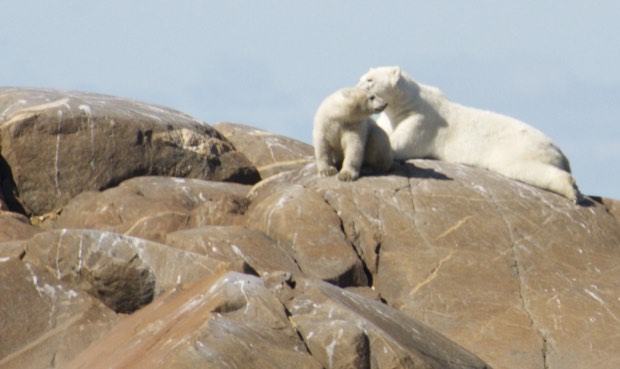
Mother and her cub on the tip of Eskimo Point. Moira Le Patourel photo.
Continuing out into the crystal clear waters of the Hudson Bay, the group came to the tip of the point and was surprised by a mom and cub nestled in the rocks and enjoying a beautiful day in the north. Travelers were ecstatic with their fortune!
Travelers on this trip took advantage of the fantastic water clarity and engaged in some snorkeling with belugas in the Churchill River and kayaking with the whales as well. One tandem kayak had the incredible thrill of getting “fluked” as a beluga slapped the water with his tail as he submerged for a dive. Water cascaded over the travelers and their boats.
The icing on the was documenting 31 various
bird species over the course of the trip. Highlights were a short-eared owl, northern goshawk, pacific loons and young, tundra swans and cygnets and an Arctic tern chick.

Sunset from the beach in Churchill. Moira Le Patourel photo.
Fireweed is beginning to bloom across the tundra and white mountain avens are fast disappearing…summer is already half over in Churchill!
by Steve Selden | Jul 6, 2015 | Churchill Photography
An overcast day in Churchill provided the perfect setting for some beautiful photographs of the natural surroundings of the region. Birds are nesting and the wildflowers are blooming all over the tundra. Beluga whales are arriving in the Churchill River in pods and we will be posting photos soon from some Natural Habitat Adventures trips in July. Enjoy these Awesome photos!
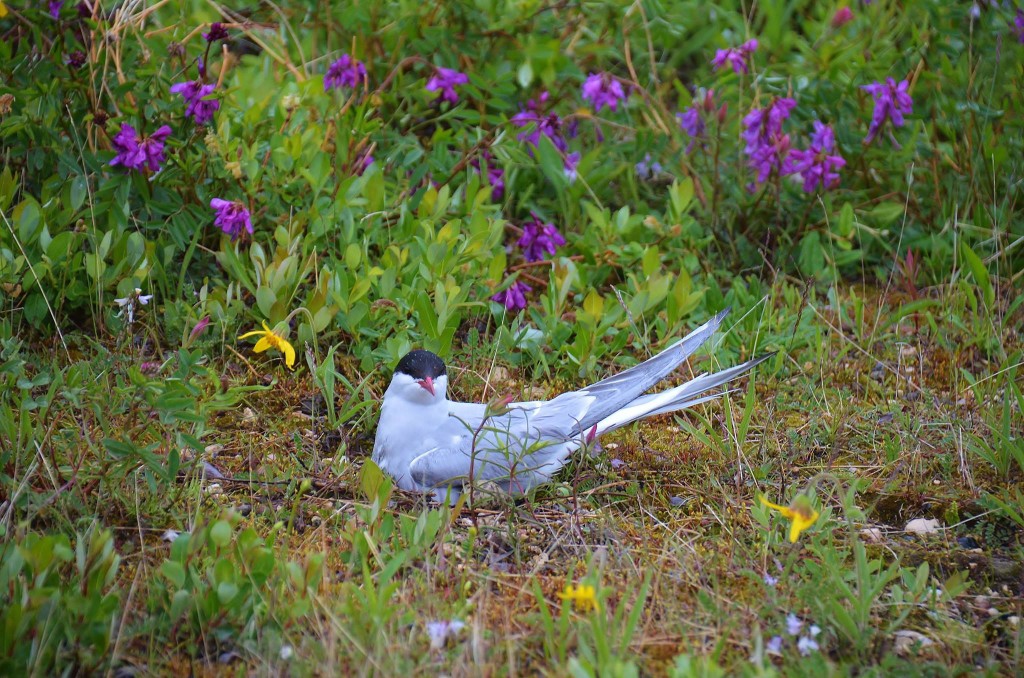
Arctic tern in a nesting area. Rhonda Reid photo.

This exquisite close – up image of an Arctic Tern incubating eggs on its nest shows just how camouflaged their eggs are. It took me awhile to even see the one egg in front of the tern since it blends so well into the tundra. Arctic terns lay 1 – 3 eggs and both the male and female incubate the eggs for up to 22 days. After birth the parents supply small fish up until they fledge at three to four weeks old. Female and male Arctic terns mate for at least a year and can mate for life. Females lay eggs once a year. Terns live on average up to 34 years.
The photo of the three Arctic tern eggs illustrates the magnificent camouflage adaptation the eggs have developed over many years. The way animals and their eggs adapt to the environment using camouflage is fascinating. Survival of species depends on these slight changes over periods of time. The faster a species can adapt the longer they can survive in nature.
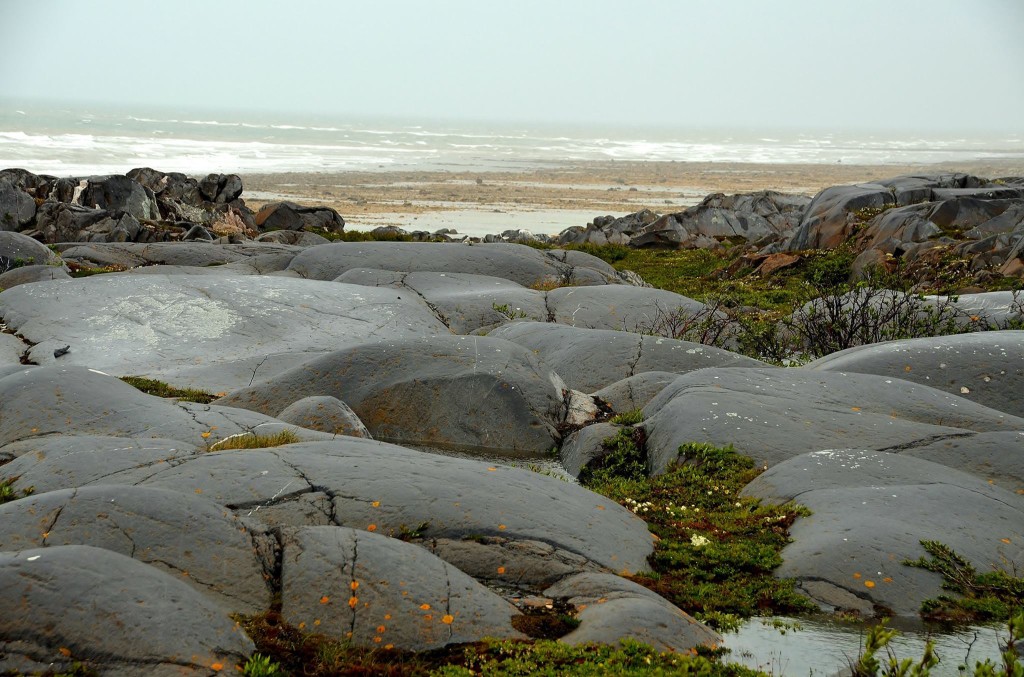
The Precambrian shield rolls down to the Hudson Bay in Churchill. Rhonda Reid photo.
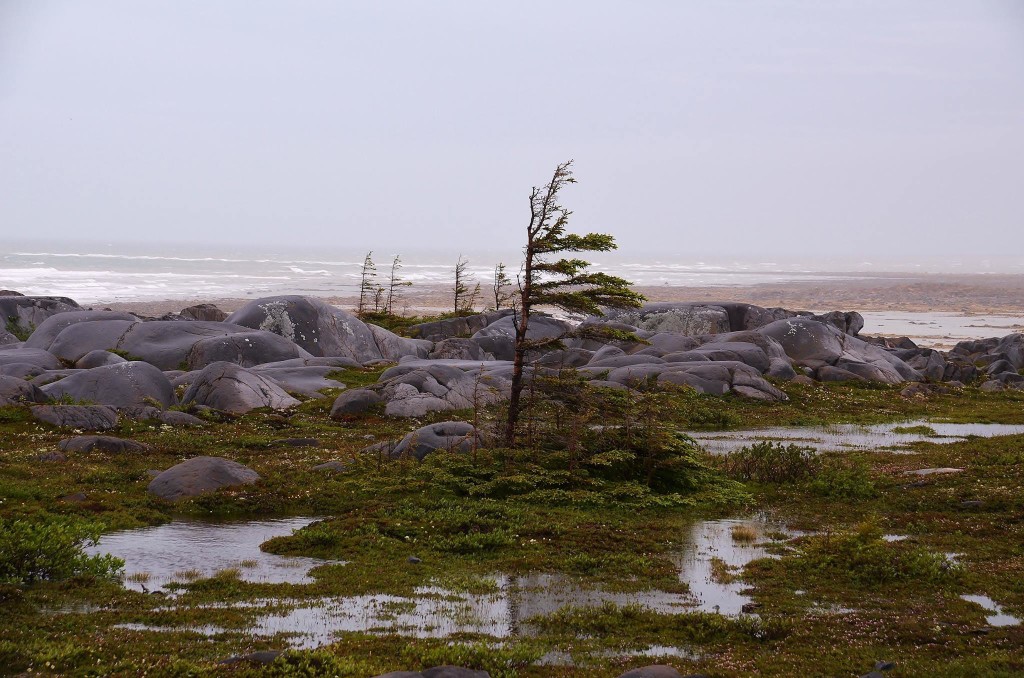
Precambrian shield with a bog and krumholz spruce. Rhonda Reid photo.
These two photos of Precambrian shield rolling toward the Hudson Bay show how the rocks have been smoothed over in previous eras by ice and water covering them. If you look closely you can see marks or “striations” caused from rocks embedded in the bottom of glaciers that were dragged over them during the slow movements of the massive ice formations. It’s quite interesting to search out these striations while hiking over the shield in Churchill.
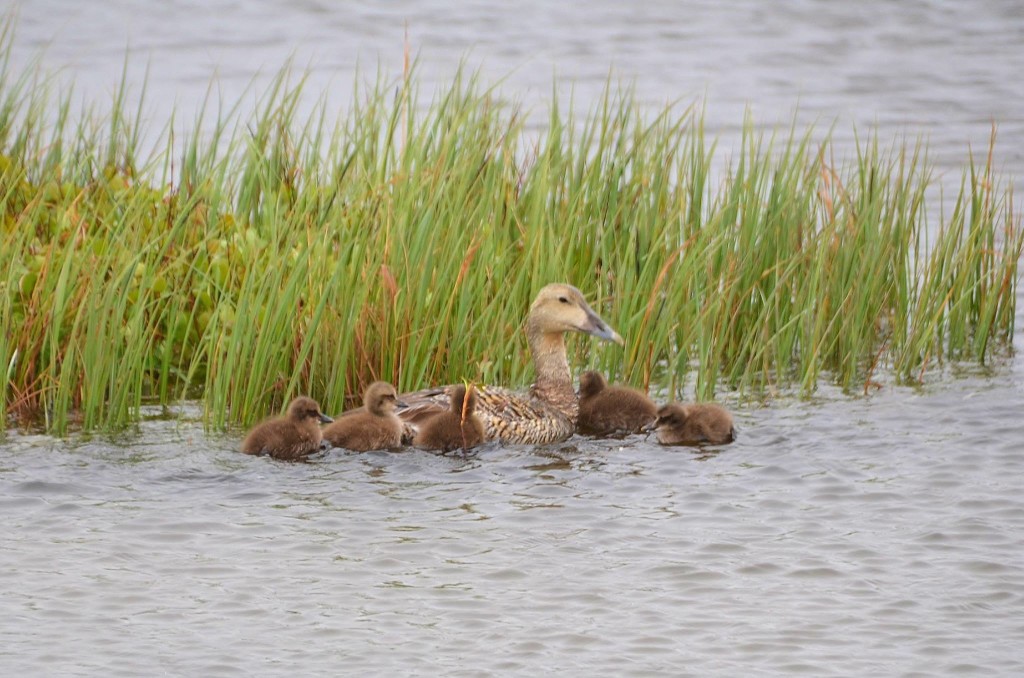
Eider duck female and her brood of five chicks. Rhonda Reid photo.




















